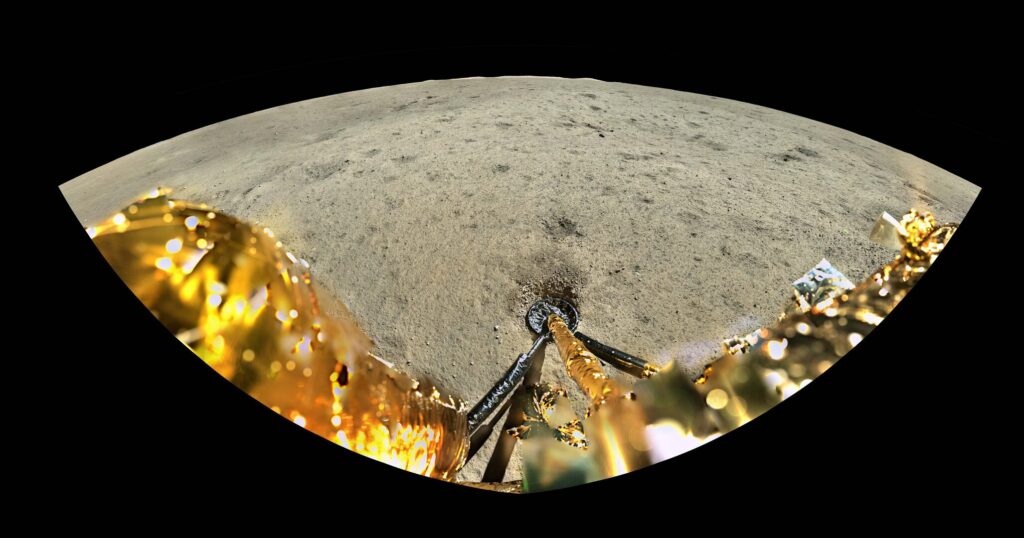Chinese television has released images showing automatic docking in near-lunar orbit. It involved the takeoff and service modules of the Chang’e-6 spacecraft. The purpose of the operation was to transport lunar soil samples.
Chang’e-6 landed on the night of June 1 to 2. The landing site of the spacecraft was the 500-kilometer-long Apollo Crater located on the back side of the Moon. It is part of the South Pole-Aitken Basin, the largest confirmed impact structure on the Moon. Its dimensions are 2400×2050 km and its depth reaches 8 km.
After landing, Chang’e-6 unfurled the Chinese flag, launched a minirover to the surface, and then began its main task of taking a lunar soil sample. Scientists hope that its analysis will allow us to understand the reasons for the asymmetry of the lunar hemispheres and shed light on the internal structure of the Moon.

After taking a soil sample, the Chang’e-6 takeoff module launched from the lunar surface. On June 6, it successfully docked with the service module and transferred the collected samples to it. The service module will remain in near-lunar orbit for the next two weeks, after which it will activate its engines and head toward Earth. On June 25, it will drop a sample capsule, which will then land in China. As for the takeoff module, it will be released, after which it will fall to the Moon.
In addition to collecting soil, Chang’e-6 also made a number of measurements using its mounted instruments, some of which were provided by European countries. The European Space Agency has already reported the mission’s first scientific discoveries. In particular, Chang’e-6 managed to record for the first time negatively charged ions. These ions arise from the interaction of the solar wind with the lunar surface.
Earlier we talked about the loss of communication between JAXA and the SLIM spacecraft on the Moon.


